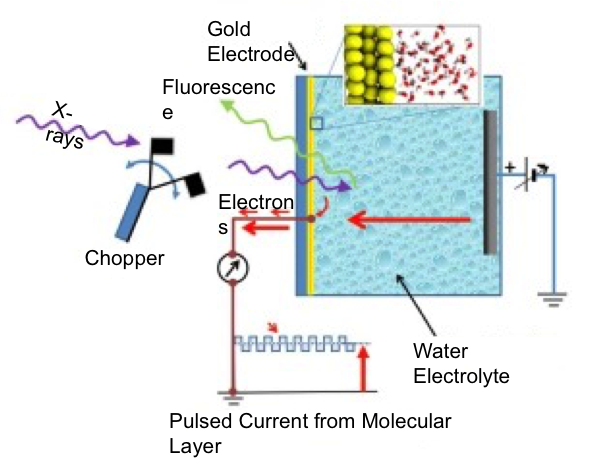
Scientific Achievement
- First X-ray absorption measurement of electrolyte structure in vicinity of biased electrode
- Simulated X-ray absorption spectra interpret measurements as indicative of hydrophilic interface with bias-dependent hydrogen-bonding network
- Agreement between theory and experiment consistent with sensitivity to two molecular layers (1nm) at interface
Significance and Impact
- Need for first-principles modeling – vital to interpretation of X-ray absorption spectra
- Consensus with molecular dynamics literature on water-gold interactions and hydrogen bonding populations
- Ex situ measurements of water on gold indicate hydrophobic interactions, while this in situ work sees the opposite
- Paves the way for future X-ray measurements at biased interfaces with evolving electrochemistry
Research Details
- First-principles molecular dynamics simulations were performed using high-performance computing resources at NERSC
- X-ray absorption calculations use an established approach developed at the Molecular Foundry, providing significant motivation for ALS experiments
Work performed at The Molecular Foundry in collaboration with the Materials Sciences Division and the Advanced Lights Source, Lawrence Berkeley National Laboratory (JCESR partner) by J.-J. Velasco-Velez, C.-H. Wu, T. A. Pascal, L. F. Wan, J Guo, D. Prendergast and M. Salmeron, Science, 2014.

